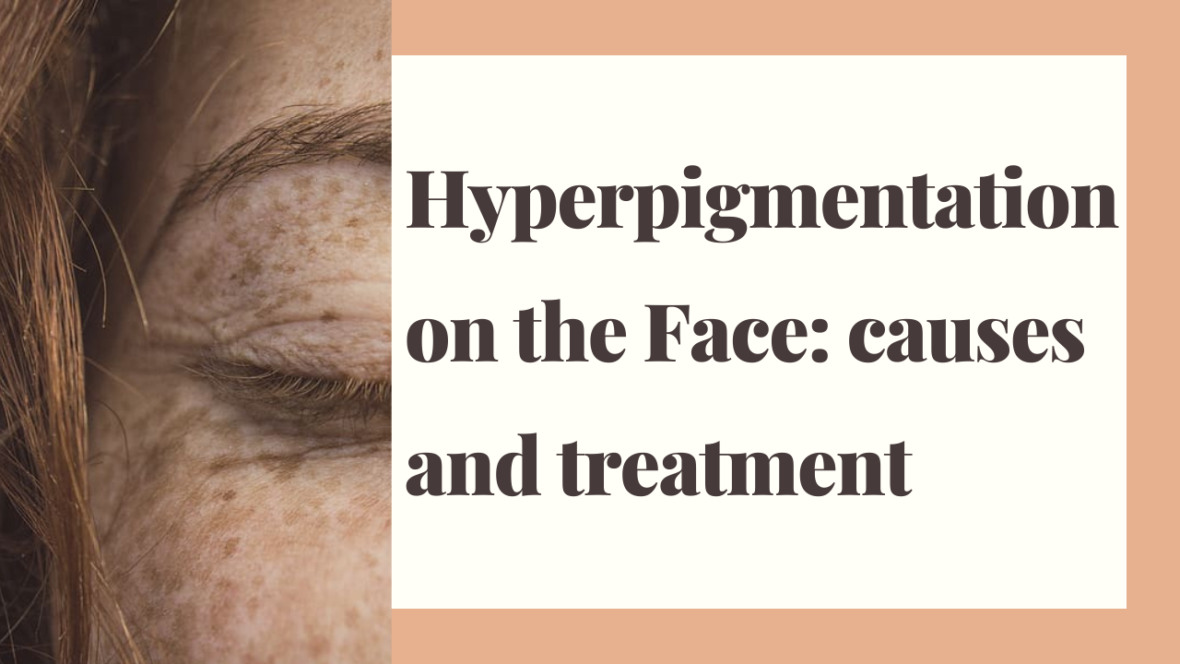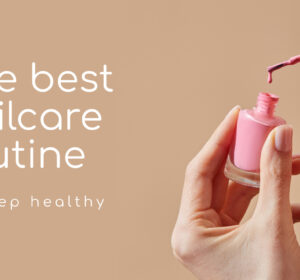If you follow my posts on the different social media platforms, you might have come to know that I have two main skin concerns, dry skin and hyperpigmentation on the face.
Dry skin is not a big problem as I can keep it under control using the right moisturising product. However, hyperpigmentation is a big concern for me. It is not nice to have dark spots on the face.
Since I want to eliminate the dark spots, I read a lot about hyperpigmentation – what it is, how to avoid it, how to reduce it, etc. I know this is a very common problem and that is why I want to share all that I learnt and the steps I am planning to follow to reduce my dark spots with you.
If you want to see the progress during my journey, follow me on Instagram. I will be sharing stories about my advances and about the new products I try.
Now, with no further delay, let’s dive into hyperpigmentation.
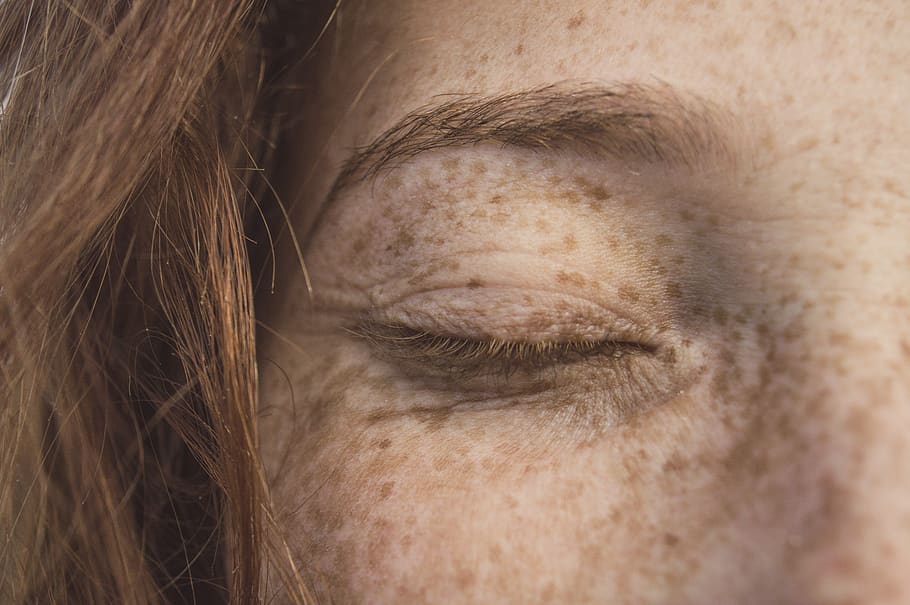
What is Hyperpigmentation on the face?
Hyperpigmentation is a term used to describe a darker area on your skin. These dark areas can cover the different extensions of skin, such as:
- Small patches
- Large areas
- Entire body
Hyperpigmentation is not a harmful skin condition but it may pose a problem from the aesthetic point of view. However, we should keep attention as hyperpigmentation can be a symptom of other more serious medical conditions.
Types of hyperpigmentation
There are different types of hyperpigmentation. However, the treatment is similar for most of them. Moreover, it is out of the scope of this post to talk about the medical treatment and I am only going to mention cosmetic treatments to reduce the appearance of the hyperpigmented areas.
The type of dark spots can be, among others:
Melasma
Melasma is a pale brown spot that appears mainly on the face. It is more common in females and most of the time melasma is a consequence of hormonal factors, such as pregnancy or contraceptive pills. However, melasma can also appear in men.
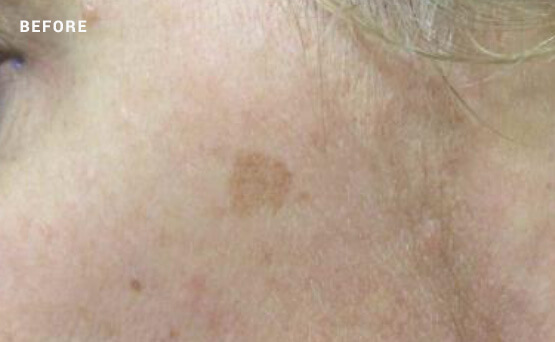
Sunspots
Sunspots are dark spots caused by sun exposure. They usually appear on the face and hands since these are the parts of the body exposed more to sun radiation.
Post-inflammatory hyperpigmentation
This type of hyperpigmentation is typical of people who suffer or had suffered from acne. Because of the acne, the skin suffers damages and dark spots appear.
What causes hyperpigmentation on the face?
Dark spots are a consequence of different factors. The most common factors are:
- UV Radiation
- Photosensitivity.
Photosensitivity is the extent to an object reacts upon receiving photons, especially visible light. In medicine, the term is principally used for abnormal reactions of the skin, and two types are distinguished photoallergy and phototoxicity.
Wikipedia
- Hormonal factors
- High prostaglandins and cytokines concentration
- Ageing process

Hyperpigmentation process
Melanin is the pigment responsible for our skin colour. The cells responsible for its production are the Melanocytes, which are in the layer of basal cells at the deepest part of the epidermis. Production of melamine occurs in cellular organelles called Melanosomes.
The process begins with the oxidation of Tyrosine in Dihydroxy Phenylalanine (DOPA) by the action of the enzyme Tyrosinase. The DOPA produced suffers an auto-oxidative process to give DOPA-quinone.

This DOPA-quinone undergoes through two different metabolic pathways yielding, therefore, two different types of melamine:
- Eumelanin. This is a brown to black pigment responsible for the dark skin colour.
- Pheomelanin. It is yellow to red pigment which produces more pale colourations.
The skin colour depends on the eumelanin to pheomelanin ratio.
As mentioned, the production of melanin occurs in the deepest part of the epidermis. Then it travels to the melanocytes cellular membrane where there is a transference of melanin to the keratinocytes nearby. This melanin migrates in such a way to the Stratum Corneum layer.
This process, from melanin production to the migration of the produced melanin to the Stratum Corneum layer, receives the name of Melanogenesis.
Normally, the skin undergoes through melanogenesis process in an even way. However, if for any reason there is an area of the skin damaged, melanogenesis can be consequently triggered in a more intensive way in that particular area, producing, therefore, dark spots.
The main factor which triggers the melanogenesis process is UV radiation. Therefore, if you want to avoid dark spots formation, you should protect your skin from UV radiation.

Hyperpigmentation treatment
Dark spots can be treated at different levels of the melanogenesis process. That includes, among others:
- Tyrosinase inhibitors. Hydroquinone (only with prescription), arbutin, azelaic acid.
- Copper pathway inhibitors: Kojic acid, Ascorbic acid.
- Melanosome reducers: Retinoids.
- Underlying inflammation reducers: Corticoids.

How each molecule work to reduce hyperpigmentation on the face
Hydroquinone
Though it cannot be acquired over the counter, I am going to mention this molecule as it is the most popular to reduce hyperpigmentation. However, its application is always under doctor surveillance.
Hydroquinone reduces tyrosinase production. This compound can be used alone or combined with other molecules. It should be used only during short periods and, as I already mentioned, always under the doctor control.
Kojic Acid
Kojic acid works avoiding the copper atoms to reach tyrosinase. This enzyme cannot work without being coupled to a copper atom (it is a metalloenzyme), therefore, it suffers inhibition. Kojic acid is less effective than hydroquinone but produces less skin irritation.
Arbutin
Arbutine is a hydroquinone derivative. It is not as effective as hydroquinone but it is better tolerated for all skin types. You can acquire it over the counter and in any beauty shop.
Retinoids
Retinoids trigger skin renewal. That improves skin health and tone. They also produce an action in the melanogenesis process, reducing, therefore, the size of the melanosomes.
Azelaic Acid
Azelaic acids is a tyrosinase inhibitor. It also has anti-inflammatory properties. Therefore, it is recommended for people with sensitive skin.
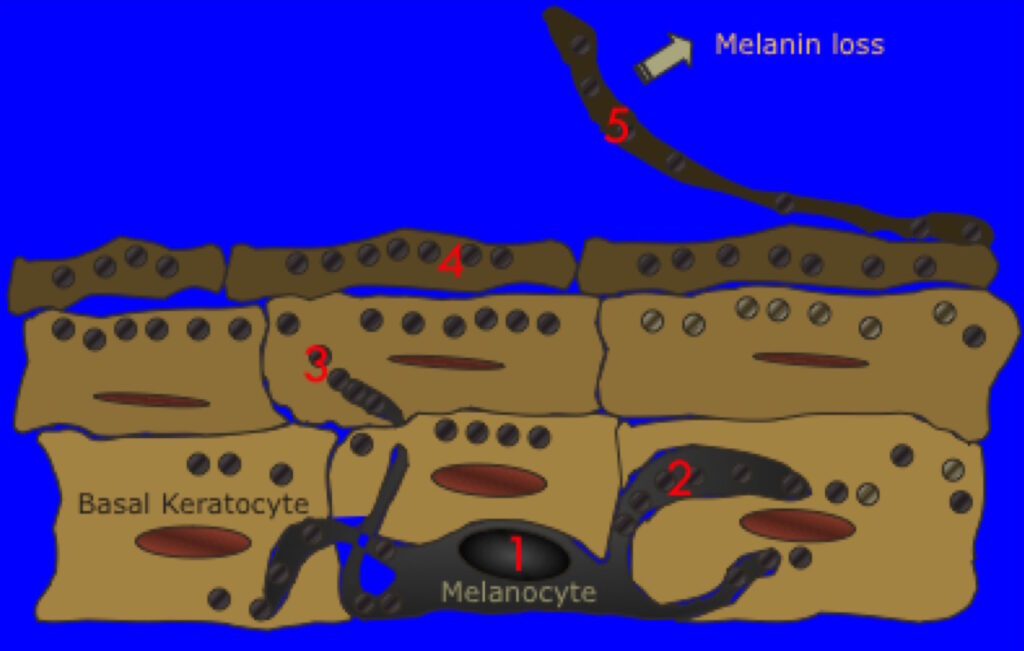
Hydroxy acids
Hydroxy acids act at the stratum corneum level eliminating dead cells. That makes easier the absorption of other compounds. Therefore, the use of hydroxy acids is recommended in combination with other ingredients. However, you must use sun protection if you use hydroxy acids.
Ascorbic Acid
It is an inhibitor of melanin production. However, the main property is that it has anti-oxidant properties. Therefore, ascorbic acid avoids the auto-oxidation of DOPA to DOPA-quinone.
Niacinamide
The main function of niacinamide is to avoid the melanin migration from the melanosomes to the keratinocytes. As a result, melanin does not accumulate in the Stratum Corneum.
Tranexamic Acid
Tranexamic acid works through three different pathways:
- Over melanocytes, controlling the melanogenesis trigger.
- Over keratinocytes. Tranexamic acid has anti-inflammatory properties and, therefore, inhibit the melanogenesis process.
- It has also an effect on the blood vessels
How will I treat my hyperpigmentation problem
Normally, one molecule itself is not enough to reduce dark spots. It is better to use a combination of them.
The molecules I will be adding to my routine are niacinamide and arbutin to my morning routine and bakuchiol (as a vegan retinol alternative), azelaic acid, and finally tranexamic acid as part of my night routine. I already use glycolic acid toner in the night and SPF 50 in the morning and during the day.
I will be adding each ingredient in a step by step way. That means, if after a week or so of using an ingredient my skin is fine I will then introduce a second ingredient and so on. If I feel any discomfort I will stop and visit my doctor.
I know that reducing dark spots can be a long process. Do not expect visible results in at least 4 months after the complete routines. Therefore, I must be patient.
Follow me on Instagram if you want to see how the process goes. If you want to know more about any of the ingredients I mentioned in this post let me know in the comments and I will make a post about that. And finally, tell me, do you suffer from hyperpigmentation?

Bear in mind that some of the links in this post are affiliate links and if you go through them to make a purchase I will earn a commission. Keep in mind that I link these companies and their products because of their quality and not because of the commission I receive from your purchases. The decision is yours, and whether or not you decide to buy something is completely up to you.
